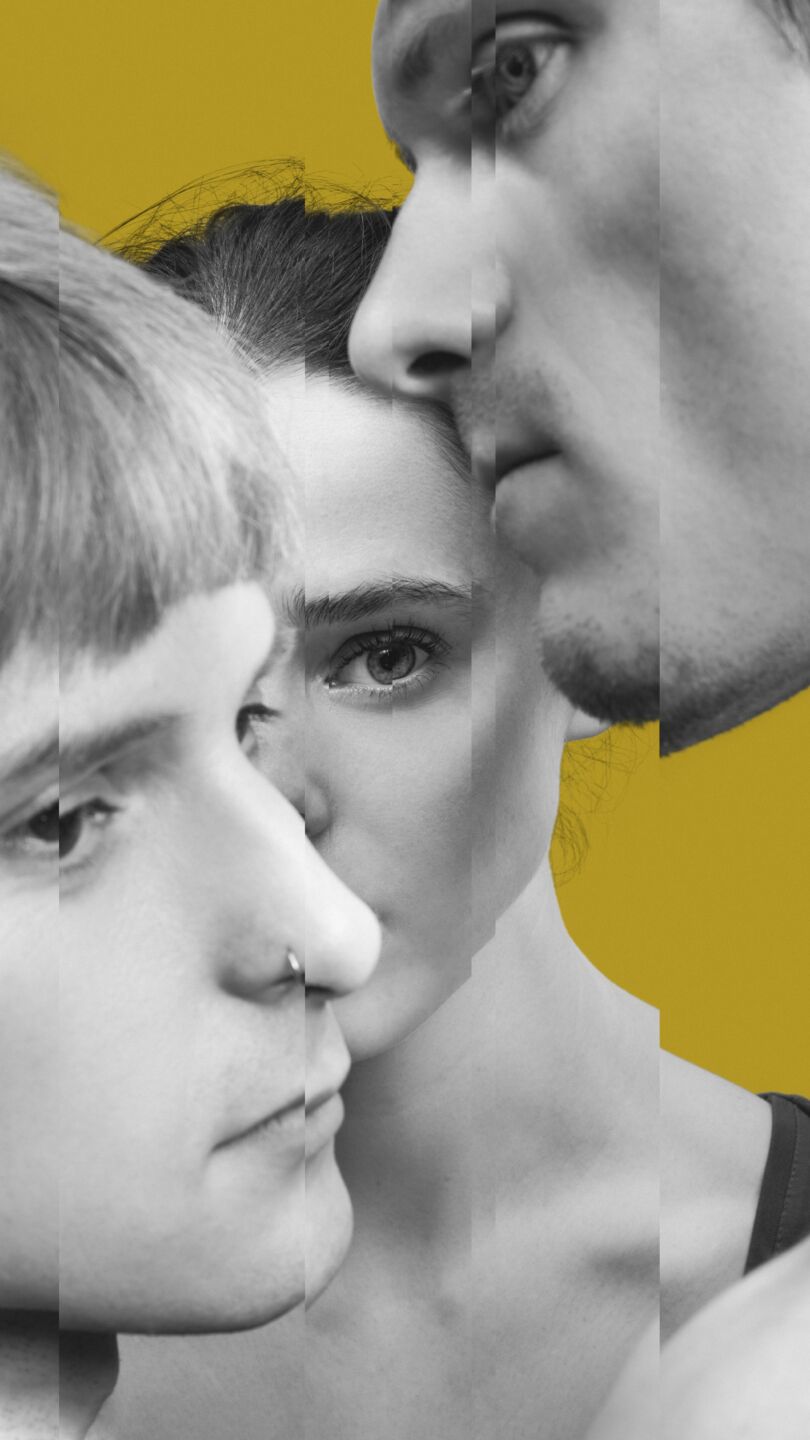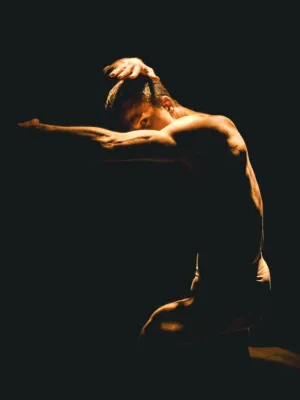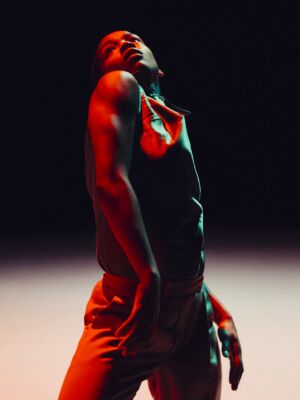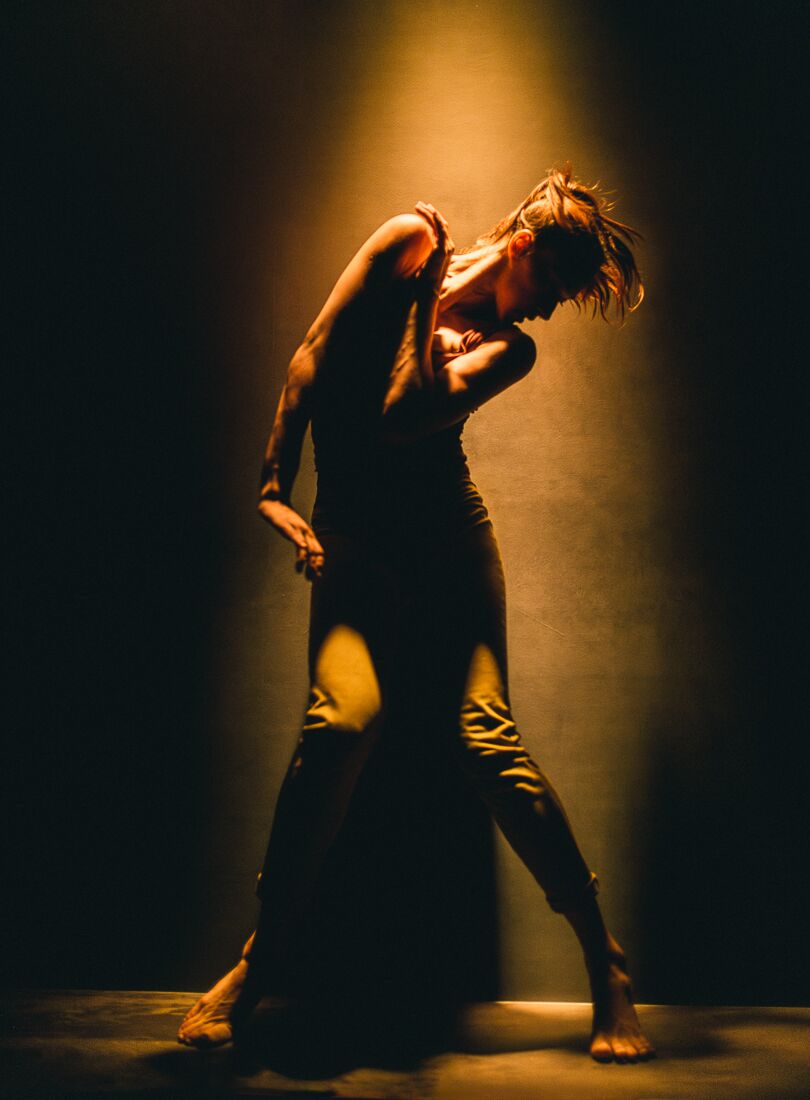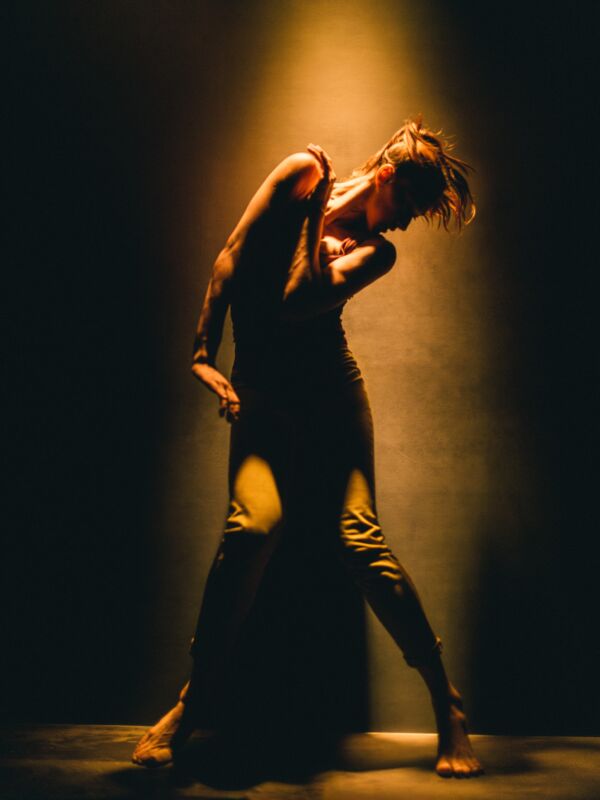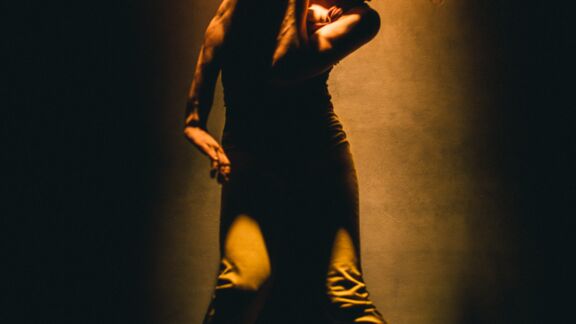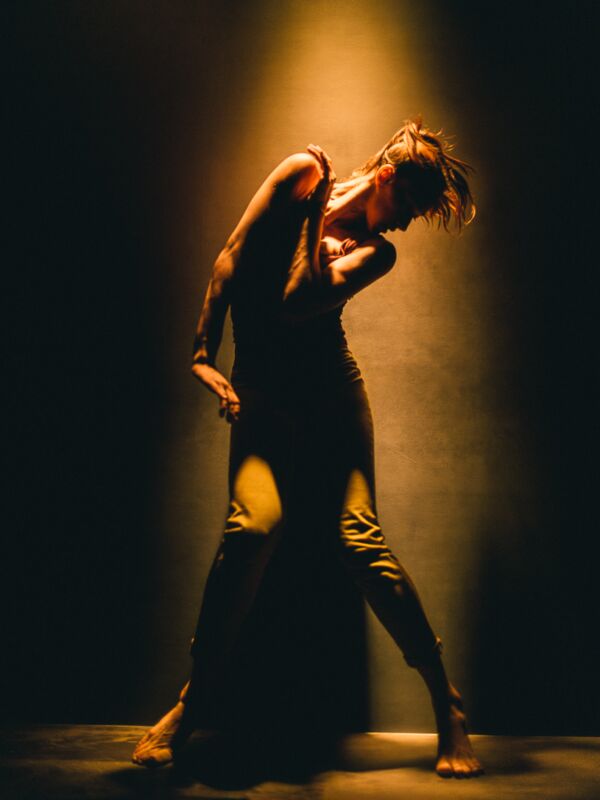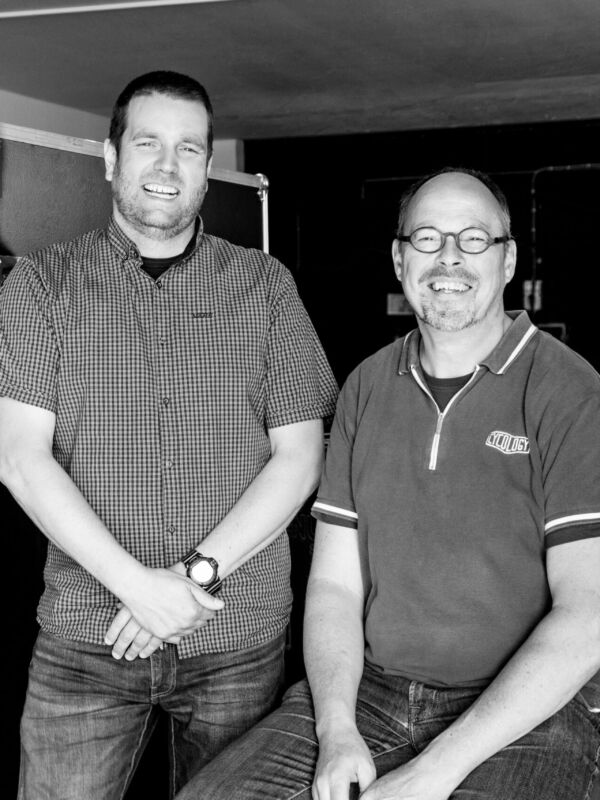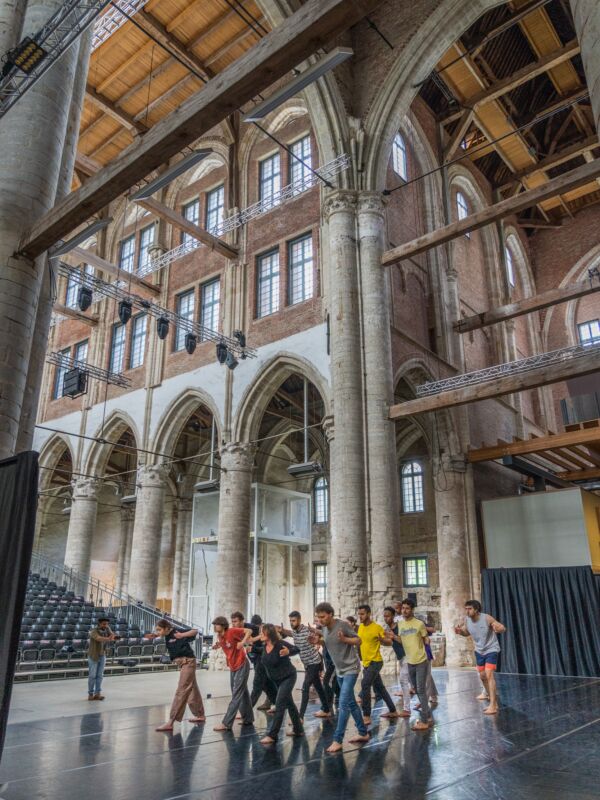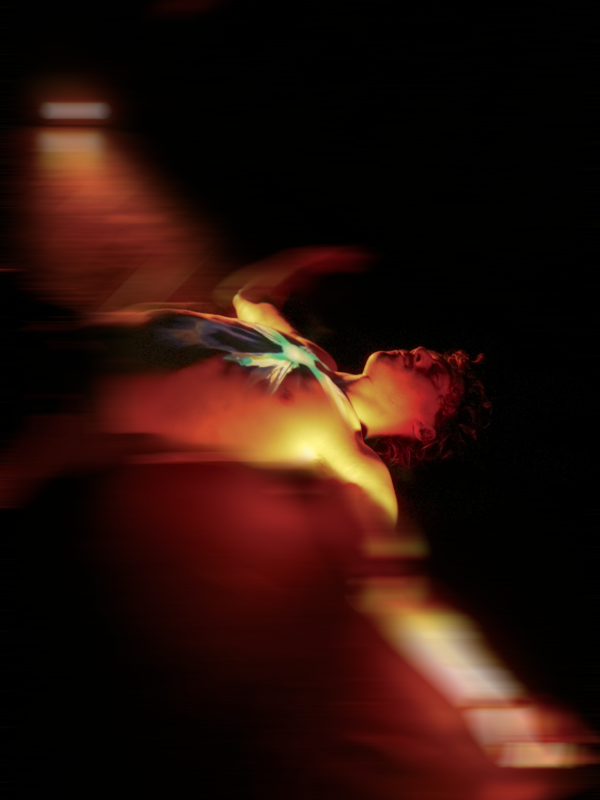Naharin was always aware of the fact that he was living in a racist country where abuse of power by fanatics had become commonplace. But he believed, and still does, in the power of dance and wanted to tell his story with it, without giving his creations political connotations.
The Hole tells such a story. An account of that agile little boy in paradise who, on his life’s path, is confronted with fortune and adversity, war and abuse of power, loss and injustice, and who, while tumbling and clutching, keeps going and believes in the human power to love and keep playing in freedom.
In The Hole, the dancers surround the audience and consist of two groups, the pigs and the roses, who switch positions of power halfway through the piece (the Pigs and Shoshanas).
It is not about one group or the other. It is a power play, a dance in which the dancers open themselves completely to the influence of gravity. They fall, almost … they lean backwards. Just barely touching the ground, they jump back in time. They smack on the ground, go flat, jump, spin and that in fear, suppression, surrender, in complete trust and full speed.
